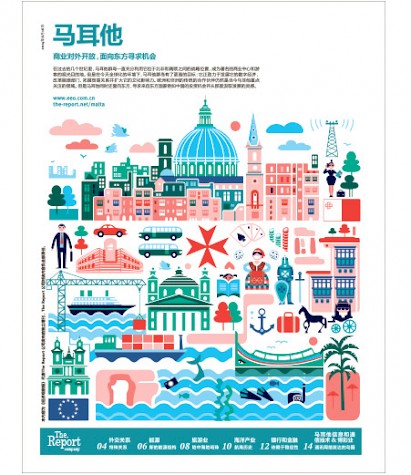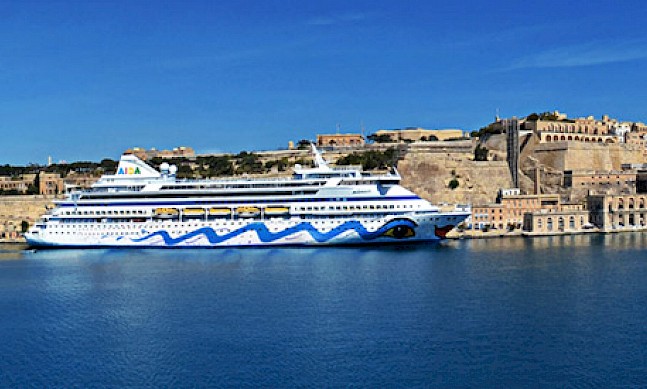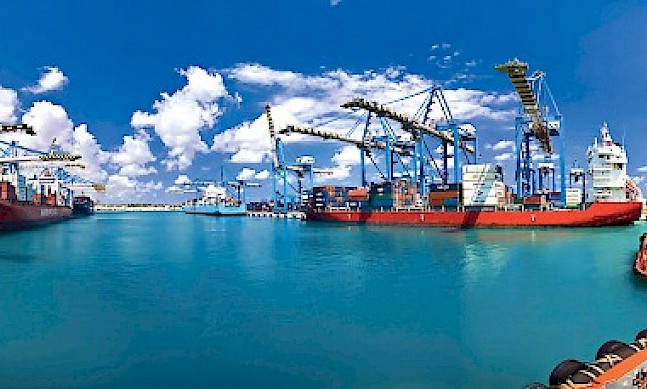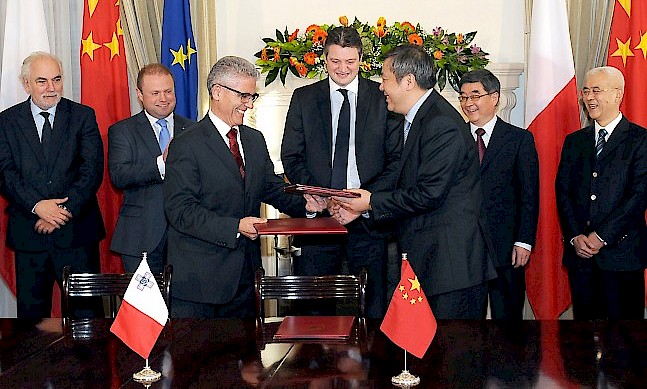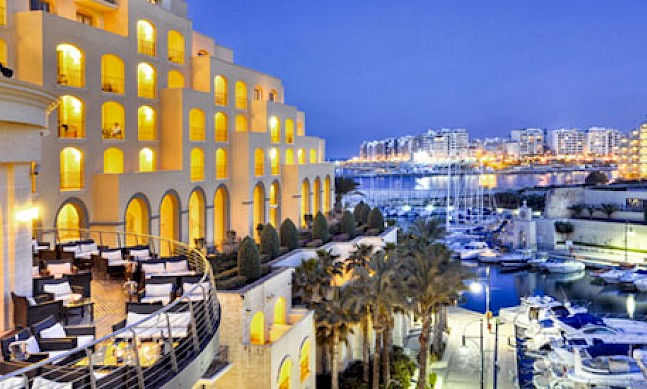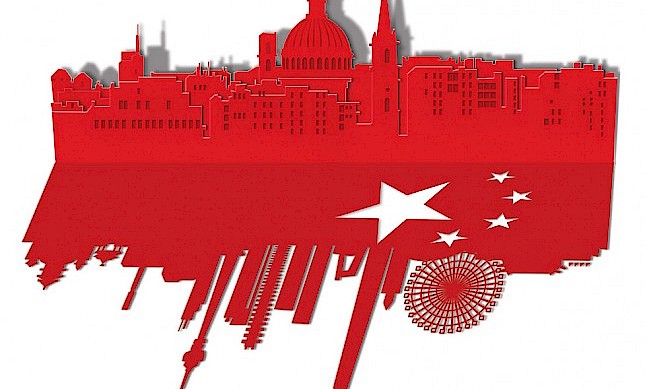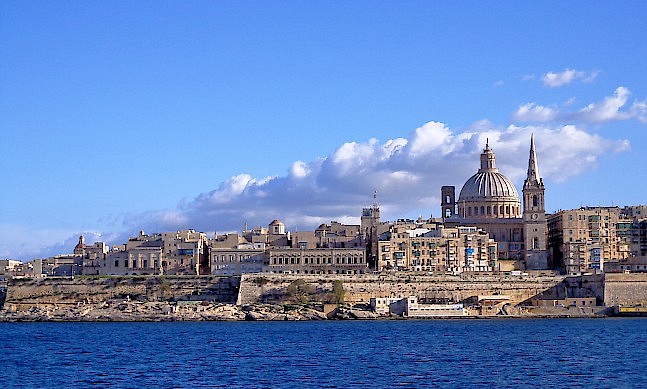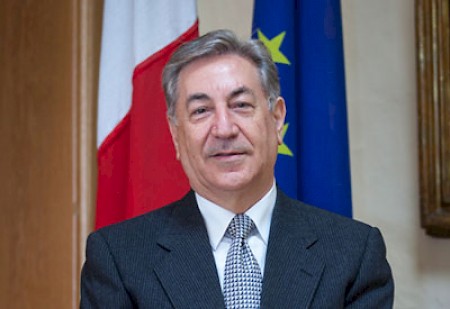
Malta’s tourism ministry is working to execute a tourism policy based on the principles of sustainable tourism development. Its aim is to contribute to economic growth whilst respecting the heritage and environment of the Maltese islands. Tourism minister Karmenu Vella, back in the role for the second time since holding office from 1996 to 1998, sat down with The Report Company to discuss his initiatives.
The Report Company: What are the tourism ministry’s main priorities in supporting the sector, and where do the challenges lie?
Karmenu Vella: Tourism’s contribution to our economy is a very strong one; 25 percent of our GDP comes from tourism so it’s a very important sector. Last year we had record numbers of arrivals, bed nights and revenues so the first challenge is to maintain this strength. During the last few years we’ve seen that most of the growth was happening during the summer months so we have a seasonality issue. Then there is the question of diversifying our products. We need to come up with a winter product.
We also need to diversify our markets as 80 percent of our tourism comes from Europe, although there are European markets which still offer a big opportunity. To give you an example, out of the UK our market share is 1 percent. In Germany our market share is only 0.25 percent, so if we could aim to bring up that market share to even 0.5 percent over a period of three years that means we could double our market in Germany. We have to look also into penetrating new markets, including long-haul markets.
We see very big potential in new emerging markets like China. There has traditionally been a very strong relationship between Malta and China but this has developed in other sectors but not in the tourism area. We signed the first tourism agreement with China in 1997. Since then, for one reason or another, that agreement has not been fully implemented, so we think that now is the right time that we have a good look at the Chinese market.
The challenge with China especially is the fact that as yet we do not have any direct flights. We also have to work on the visa issue as well. As Malta is in the Schengen area within the European Union we have to abide by EU regulations and all the Chinese coming here will have to have a Schengen via. We don’t want to make things difficult for the Chinese to get a visa.
TRC: How are you working to increase tourism revenue?
KV: We analyse the spend pattern of the different nationalities and spend per tourist varies from around €600 right up to €1,800, so if you get a certain tourist from a certain country it’s like getting three of the ones who spend less. Even different segments produce different revenues. One of highest-spending segments is the meetings, incentives and conference and events (MICE) segment and that is very important for us not only because they spend more but also because it’s a year-round segment so it helps us tackle seasonality.
TRC: Are there any initiatives through the ministry to promote the destination to the Chinese market?
KV: The potential tourist volumes out of China are enormous. Malta is a very small destination: we have a population of around 400,000 and we are already getting 1.6 million tourists, so we have to be careful about volume. Out of China I think we should go for special niche segments rather than mass tourism. For example, cultural, sports, educational and cruising tourism.
“We see very big potential in new emerging markets like China. There has traditionally been a very strong relationship between Malta and China but this has developed in other sectors but not in the tourism area. We signed the first tourism agreement with China in 1997.”Tweet This
TRC: How can Malta build a greater presence in winter tourism?
KV: We have to come up with a winter product because you cannot simply take the summer product and try to sell it during the winter months. I think with a little bit of effort we can turn Malta into a conference destination. We have good venues, good professional destination management companies, a hospitable population which speaks English and good weather almost all year round.
Another part of the plan entice airlines to lengthen their periods of flights from the traditional May to September. We are working with them to extend this to November, or to start in April rather than May.
TRC: What is the trend in air arrivals to Malta?
KV: Last year, arrivals to the airport increased by about 12 percent. The forecast for this year is again going to increase by another 2.5 percent. This year we have British Airways starting to fly again after five years of absence. We have new entrants who did very well last year and will continue operations next year like Wizz Air, Turkish Airlines and Transavia.
TRC: The tourism ministry is also responsible for aviation. What are your priorities in this regard?
KV: Aviation has grown in Malta during the last few years but it has grown in an organic sporadic manner. What we plan to do is try to manage this growth in aviation and the different segments. Before, we used to think of aviation as transporting passengers from point A to point B but nowadays in Malta we have aviation schools, handling companies and MRO companies, so it’s a more holistic approach. We’re looking at the whole 360 degrees of aviation.
We’re looking at the aircraft registration in Malta, technical checks for aircraft, maybe airlines who want to register in Malta even though they operate elsewhere so there are a good number of activities related to aviation. This would give us a chance of developing the aviation sector as a standalone sector.
TRC: Cruise ship figures decreased in 2013. What are your plans to recover the industry?
KV: Last year we saw a drop in cruise passengers because a decision was taken by three cruise liner companies to drop Malta from their itinerary. This was a cost consideration. Since the Costa Concordia incident, cruise liners had to drop their prices. At the same time as they dropped their prices, fuel prices went up so they have shortened their routes. For example, one route was Sicily-Malta-Tunisia, so they dropped Malta.
We have started negotiating and in 2014 we will be recovering half of the business lost. By 2015 we will come level with where we were in the 2010-2012 period.
We are also working to attract home-porting, because most of the cruise liners coming to Malta just use Malta as an entry port for port calls only.
“Even though we had a record year last year the government has increased the budget for tourism. We would like to see more investment, not only in hotel but also in entertainment venues, attractions, and culture.”Tweet This
TRC: What makes Malta unique as a destination within the Mediterranean?
KV: You have so many attractions, especially cultural attractions, concentrated over a very small area. Even if you stand in one spot, if you look in one direction you will see something left by the Knights of Malta, in another you will see something left by the British, then you look another way and find a prehistoric temple. In that sense, Malta is unique. We have a number of World Heritage sites, and Valletta will be the European City of Culture in 2018.
TRC: How are you planning to capitalise on Valletta being the European Capital of Culture in 2018?
KV: There are a number of projects, mostly cultural. In due course the government will be issuing expressions of interest for a number of sites, buildings and ideas and when everything is put together the government will come up with a holistic plan not just for Valletta but for the surroundings as well. Hopefully whatever we do to launch Valletta 2018 will remain there beyond 2018.
TRC: What can be done to attract investment to Malta’s tourism sector?
KV: There is always room for improvement. Even though we had a record year last year the government has increased the budget for tourism. We would like to see more investment, not only in hotel but also in entertainment venues, attractions, and culture. For a number of years I think that we have had what I call frozen culture. We need to turn that into applied culture. I think with some private sector investment and with a little bit of imagination and good ideas, we can turn these cultural assets that we have into applied culture. For example, we could restore a chapel and open that chapel in the morning for young artists and musicians to use. This would create a synergy between the arts and music and our heritage. We also need investment in events because Valletta is one of the few cities in Europe that goes to bed at 7pm as soon as the shops close. There is very little activity.
TRC: How would you like Malta to be portrayed internationally?
KV: I wouldn’t think that we could simply project one aspect of Malta because Malta’s forte is the diversity of its product. Whatever your interest is, you are bound to find it in Malta. I don’t think that any other island as small as us can offer all the cultural heritage and leisure opportunities that we have. Malta also boasts the hospitality of the people, a year-round good climate, and good value for money.
